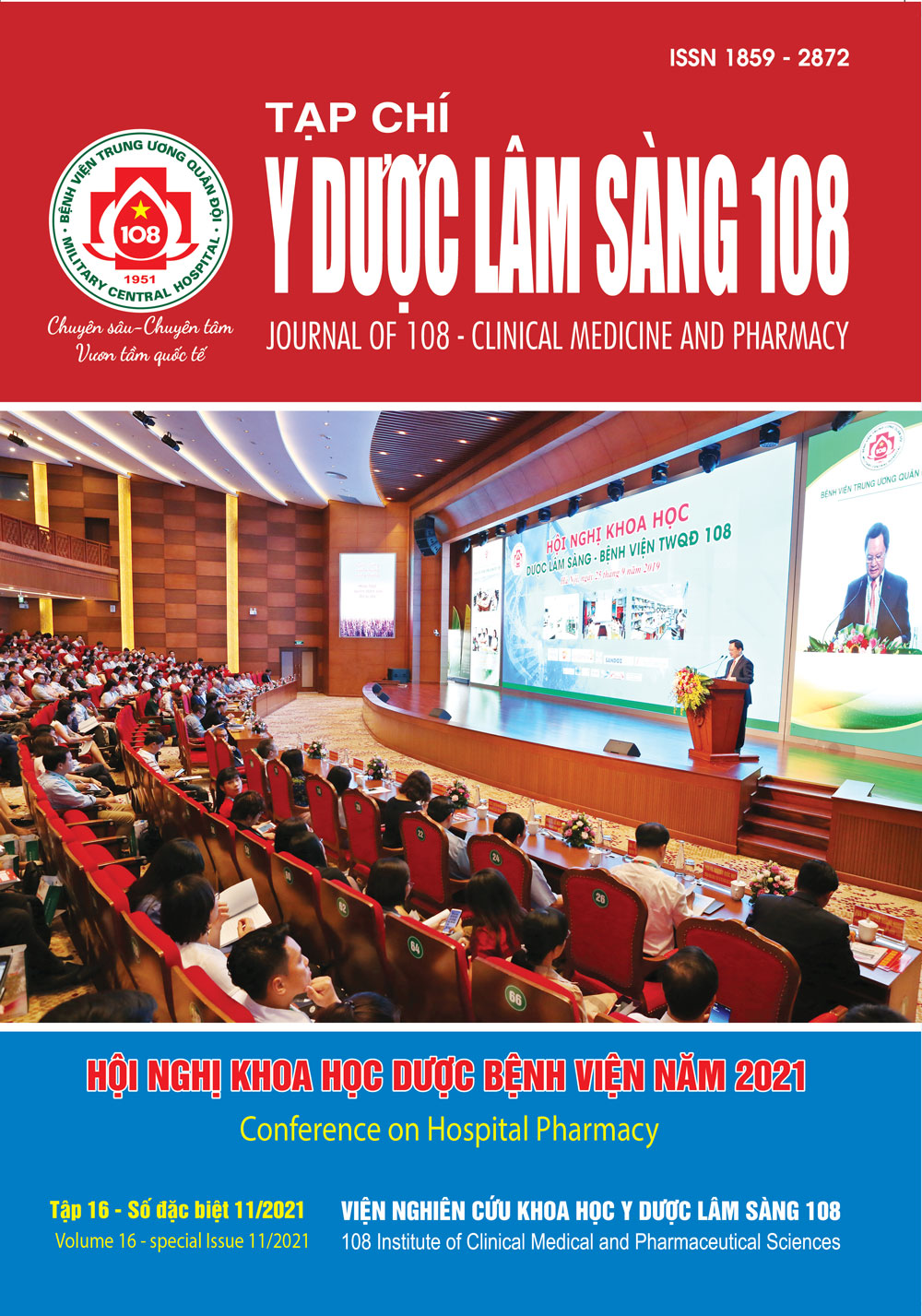Analysis of the order form approval for colistin in intensive care patients at 108 Military Central Hospital
Main Article Content
Abstract
Objective: To analyse of clinical, microbiological and initial prescribing characteristics of patients who was used colistin in the intensive care unit at the 108 Military Central Hospital. To analyse of characteristics approving the order form for using colistin of clinical pharmacist. Subject and method: inpatients treated with colistin from February 26th 2020 to May 17th 2021 at 02 departments: The Intensive Care Center and Department of Air-borne infectious diseases and intensive care of 108 Military Central Hospital. Method: This was a prospective, observational study. Result: 116 patients were treated in group with OF and 16 in Non-OF. Three most common isolated species were A. baumannii, K. pneumoniae and P. aeruginosa. There were 96 DRPs detected and interfered in the drug approval process with the acceptable rate of 75.0%. The rate of occurrence of nephrotoxicity was 47.5%, in which was stage R - risk: 82.8%, stage I - injury: 17.2%. The rate of cure/relief was 54.8%, death rate: 45.2%. Conclusion: The patients in the intensive care units of the 108 Military Central Hospital were critical ill patients with a high rate of multidrug-resistant infections. The using order form’s colistin on this patient group helped to standardize and optimize the use of colistin through direct interventions when DRPs were detected by clinical pharmacists. Collaboration between doctors and clinical pharmacists contributes to the safety and effectiveness of colistin use in critically ill patients.
Article Details
References
2. Bộ Y tế (2020) Quyết định về việc ban hành tài liệu "Hướng dẫn thực hiện quản lý sử dụng kháng sinh trong bệnh viện”. Bộ Y tế, 5631/2020/QĐ-BYT.
3. Nguyễn Đức Trung và cộng sự (2019) Phân tích thực trạng sử dụng colistin tại Bệnh viện Trung ương Quân đội 108. Tạp chí Y dược lâm sàng 108, tập 14, trang 30-36.
4. Lopes, José António and Jorge, Sofia (2012) The RIFLE and AKIN classifications for acute kidney injury: A critical and comprehensive review. Clinical Kidney Journal 6(1): 8-14.
5. Nation, Roger L et al (2017) Dosing guidance for intravenous colistin in critically-ill patients. Clinical infectious diseases: An official publication of the Infectious Diseases Society of America 64(5): 565-571.
6. Plachouras D et al (2009) Population pharmacokinetic analysis of colistin methanesulfonate and colistin after intravenous administration in critically ill patients with infections caused by gram-negative bacteria. Antimicrob Agents Chemother 53(8): 3430-3436.
7. Sader HS et al (2014) Antimicrobial susceptibility of Gram-negative organisms isolated from patients hospitalized in intensive care units in United States and European hospitals (2009-2011). Diagn Microbiol Infect Dis 78(4): 443-448.
8. Solé-Lleonart C et al (2016) Global survey on nebulization of antimicrobial agents in mechanically ventilated patients: A call for international guidelines. Clin Microbiol Infect 22(4): 359-364.
9. Tsuji BT et al (2019) International consensus guidelines for the optimal use of the polymyxins:
 ISSN: 1859 - 2872
ISSN: 1859 - 2872
